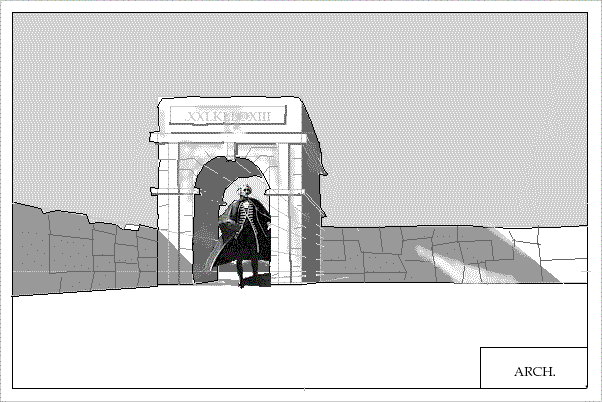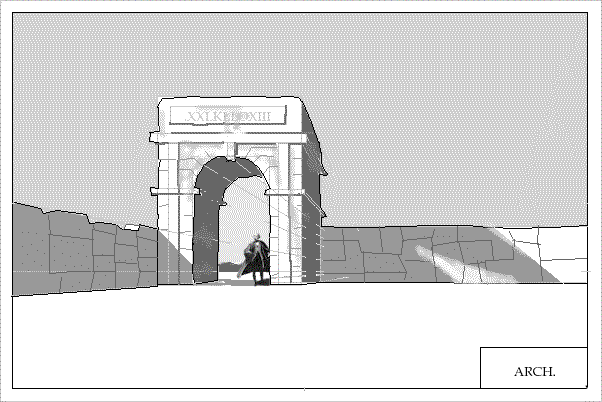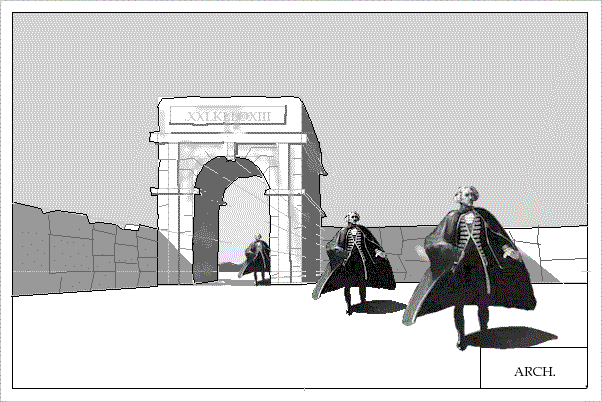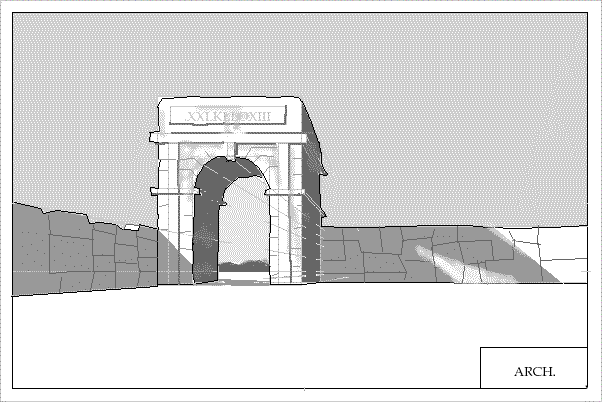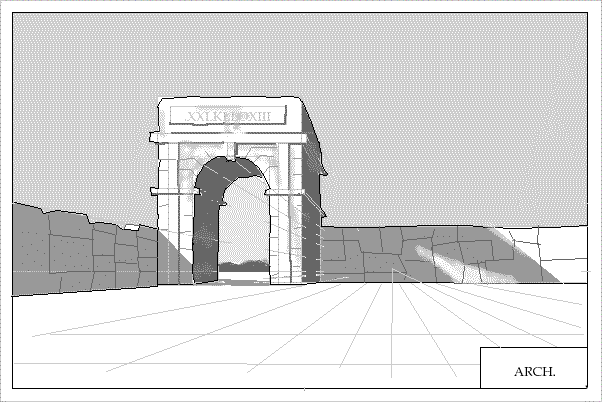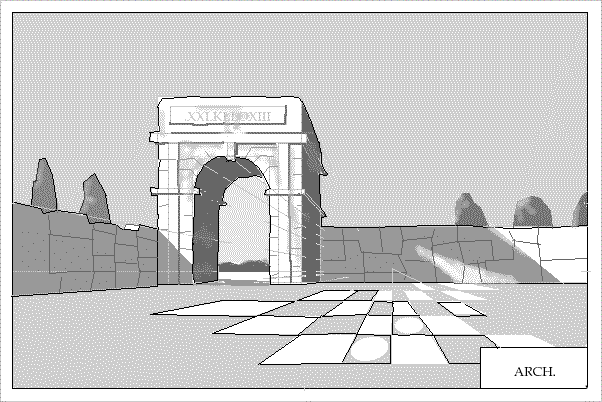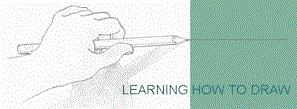 |
|
| LESSON
- TEN ... CONTINUED
Aim: To reinforce the notion of 'logical size'. The size of objects being determined by introducing a familiar object at the same 'level' (a similar distance from the viewer). Then to complete the drawing started in the previous lesson. The teacher should print off the following three drawings and hand them out as reference drawings.
a) Here I have introduced 'the admiral' and put him in the arch. Suddenly the arch has a particular and definite size. Ask the students, why is that? From the moment a baby opens its eyes it begins keying-in shapes, with one of the first being the human face and body. Then it learns to recognise various other shapes in order of their importance. The child also learns to judge how far or how close is a particular object. Ask the class how this is done? You could mention that these common perceptions are what bind people together. There are, of course philosophical implications here concernig the commonality of experience ... but that is what drawing is all about! Anyway, in the order of things human the body is a far more dominant form than any old archway. This body of our 'Admiral Cowdisley Shovel' determines the size of the arch (how high is it here?) as we all know the avereage height of the human body, but, what if we shrink the poor old sailor?
b) Suddenly the arch has grown. How tall is it now?
c)
OK so now I have multiplied the figures and drawn them forward. If we roughly draw lines through
the Admiral's head and feet where would they meet? Let's go back to our unfinished drawing.
d)
Note the detail lines suggesting the blockwork on the arch radiate out from the curve of the arc and then square. This is a tiny detail but one born of awareness. Ask the pupil
about laying bricks that will form an arch, or the color of their front gate,
or the size of a normal teacup. Test their awareness to common things and ask them to test you.
e) Using method in previous construct perspective 'grid' on the ground. Remember the firm lines are to be done freehand.
f) The pupil should be encouraged to decide on the design of the forecourt and individualise it as much as possible. Add some trees behind the wall to soften the starkness. HOMEWORK: Complete the drawing by adding a small figure in the arch. lesson menu |
